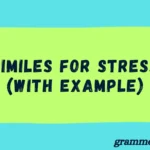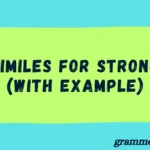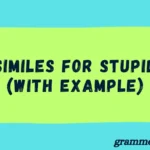Punctuation might look small, but it shapes the way your ideas flow on paper. Among all punctuation marks, few spark as much confusion as the semicolon. Many writers wonder: Is it “semicolon” or “semi-colon”? This article clears up the spelling debate, digs into correct usage, and shows you exactly how and when to use this mark to elevate your writing.
Semicolon vs. Semi-Colon: Which is Correct?
The short answer: semicolon is correct.
The word “semicolon” is written as one word without a hyphen. The alternative spelling “semi-colon” is outdated and not recognized in modern English.
According to Merriam-Webster, Oxford English Dictionary, and Cambridge Dictionary:
- Semicolon = standard spelling in both American and British English.
- Semi-colon = archaic form occasionally seen in older texts but no longer used.
👉 Example from Oxford English Dictionary:
“Semicolon, n. A punctuation mark (;) used to connect independent clauses or separate items in a complex list.”
Why does this matter? Search engines, style guides, and grammar resources overwhelmingly use “semicolon.” If you’re writing for academic, professional, or online audiences, use semicolon without hesitation.
What is a Semicolon?
A semicolon ( ; ) is a punctuation mark that signals a pause stronger than a comma but not as final as a period. Think of it as a bridge between two closely related ideas.
It looks like this: ;
Quick facts about semicolons:
- First appeared in 1494, introduced by Italian printer Aldus Manutius.
- Functions as a link between independent clauses.
- Avoids confusion in lists with multiple commas.
A semicolon is not just a fancy comma—it carries its own weight in writing.
When to Use a Semicolon
Understanding semicolon rules makes your writing sharper and easier to read. Here are the three main scenarios:
Joining Two Independent Clauses
Use a semicolon to connect two complete sentences that are closely related.
✔ Correct:
- I love hiking; it clears my mind.
- The sun set behind the hills; the sky turned orange and pink.
✘ Incorrect (should use a comma or period instead):
- I love hiking, it clears my mind.
Rule of thumb: If you could replace the semicolon with a period and both sentences still make sense, the semicolon works.
Separating Complex Lists
Semicolons shine in lists that already contain commas.
✔ Example:
- On our trip we visited Paris, France; Rome, Italy; Madrid, Spain; and Athens, Greece.
Without semicolons, the list would look confusing.
Linking with Conjunctive Adverbs or Transitional Phrases
Semicolons often appear before words like however, therefore, moreover, nevertheless, consequently, instead, and for example.
✔ Example:
- She didn’t study for the exam; therefore, she didn’t pass.
- He wanted to join the meeting; however, his flight was delayed.
Here, the semicolon joins the two sentences, and the adverb makes the relationship clear.
Common Mistakes with Semicolons
Even advanced writers slip up. Let’s look at frequent errors:
- Replacing commas in simple lists
- Wrong: I bought apples; oranges; bananas; grapes.
- Right: I bought apples, oranges, bananas, and grapes.
- Wrong: I bought apples; oranges; bananas; grapes.
- Placing semicolons before coordinating conjunctions
- Wrong: I studied hard; but I was still nervous.
- Right: I studied hard, but I was still nervous.
- Wrong: I studied hard; but I was still nervous.
- Overusing semicolons in short sentences
- Wrong: I’m tired; I’ll sleep.
- Better: I’m tired. I’ll sleep.
- Wrong: I’m tired; I’ll sleep.
Semicolon vs. Colon: Key Differences
Writers often confuse semicolon (;) and colon (:), but they serve different purposes.
Here’s a side-by-side comparison:
| Feature | Semicolon (;) | Colon (:) |
| Function | Joins related independent clauses; separates complex list items | Introduces explanations, examples, lists, or quotations |
| Strength | Medium pause | Stronger pause |
| Example | She plays the piano; he plays the guitar. | She has two hobbies: painting and hiking. |
Case Study:
- Correct semicolon: He visited London, UK; Paris, France; and Berlin, Germany.
- Correct colon: He had one goal: win the championship.
Semicolon in Formal and Creative Writing
Formal Writing
In academic papers, business reports, and professional documents, semicolons signal precision. They connect related ideas without breaking them into short, choppy sentences.
✔ Example in academic writing:
- The experiment yielded consistent results; however, further testing is required to confirm the hypothesis.
Creative Writing
Authors sometimes use semicolons to create rhythm or dramatic pacing. They add subtle sophistication when connecting related thoughts.
Quote from author Lewis Thomas:
“I have grown fond of semicolons; they show the writer knows how to think.”
Word of caution:
Overusing semicolons in fiction can make prose feel heavy. Balance them with commas, periods, and dashes.
Quick Reference Table: Semicolon Rules at a Glance
| Rule | Example |
| Join two related independent clauses | She practices daily; her progress shows. |
| Separate items in complex lists | I met Anna, the doctor; Paul, the engineer; and Maria, the artist. |
| Use with conjunctive adverbs | I wanted to join; however, I was too late. |
Keep this table handy—it’s a fast way to check your punctuation.
Frequently Asked Questions
Is “semi-colon” ever correct?
No. “Semi-colon” is considered outdated. Modern English only uses semicolon.
Who decided on the spelling “semicolon”?
The term comes from Latin semi- (“half”) + Greek kōlon (“clause”). Over time, the hyphen dropped, and dictionaries standardized semicolon.
Do British and American English differ?
No. Both follow the same rule: semicolon without a hyphen.
What’s the difference between a semicolon and a dash?
A semicolon connects related clauses formally; a dash creates an informal break or emphasis.
✔ Example semicolon: The storm was fierce; the damage was worse.
✔ Example dash: The storm was fierce—the damage was worse.
Can you use a semicolon in place of a comma?
Only in complex lists. Never use semicolons to replace commas in simple sentences.
Conclusion
The verdict is simple: semicolon is the correct spelling. Semi-colon has faded into history and no longer appears in respected dictionaries or style guides.
More importantly, a semicolon isn’t just about spelling—it’s about clarity. Use it to link closely related ideas, organize complex lists, and balance your writing with elegance.
Remember:
- Semicolon = correct spelling.
- Use it sparingly but effectively.
- Avoid common mistakes like overuse or replacing commas.
Mastering the semicolon shows you value precision and flow in your writing. Whether you’re drafting an academic paper, a blog post, or even a novel, this mark helps you communicate with clarity and style.

Mariah Cannon is the dedicated educator behind GrammerHome.com, committed to making English grammar clear, engaging, and confidence-boosting. With years of teaching experience and a passion for effective communication, Mariah specializes in breaking down complex grammar rules into bite-sized, easy-to-apply lessons.




